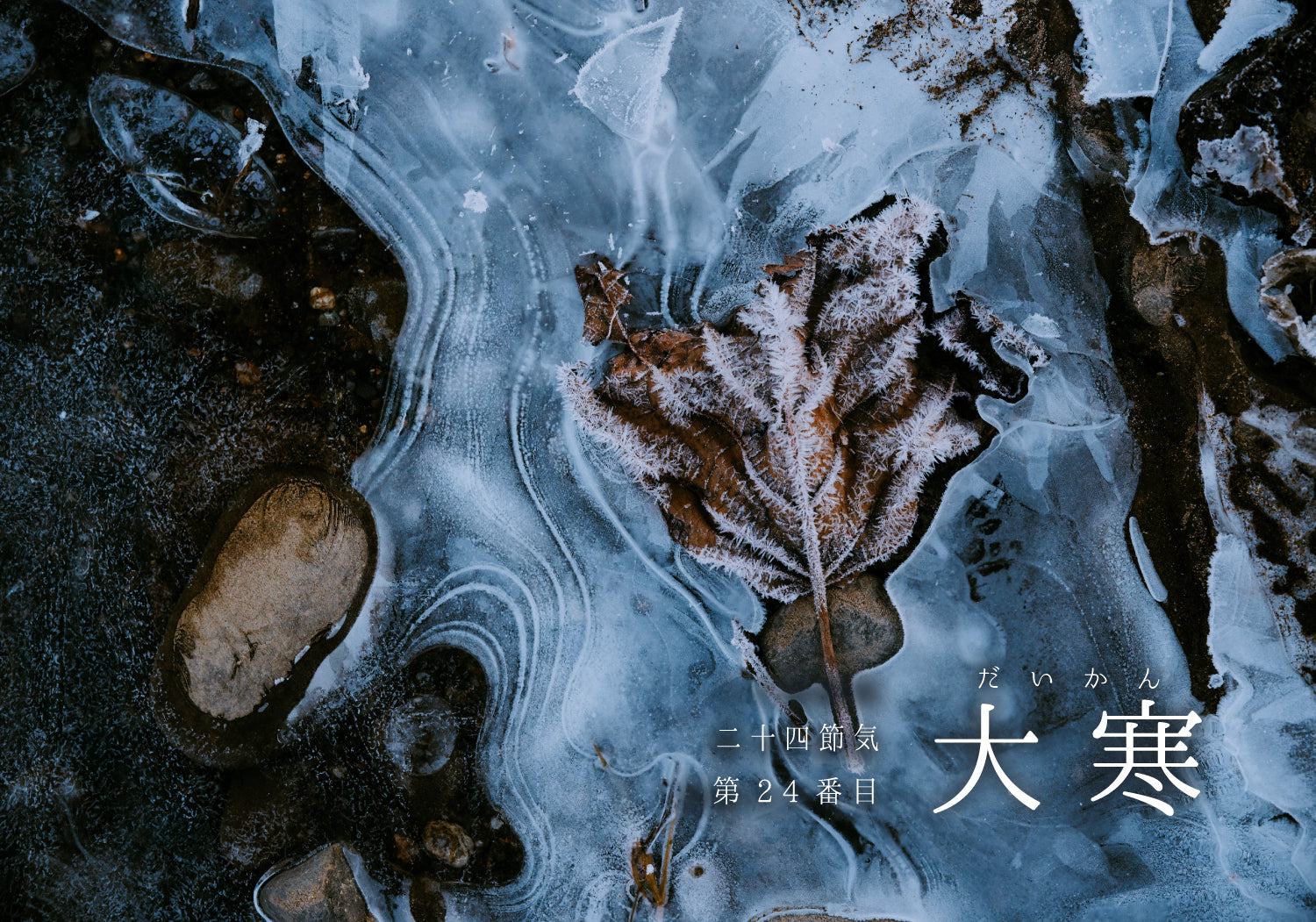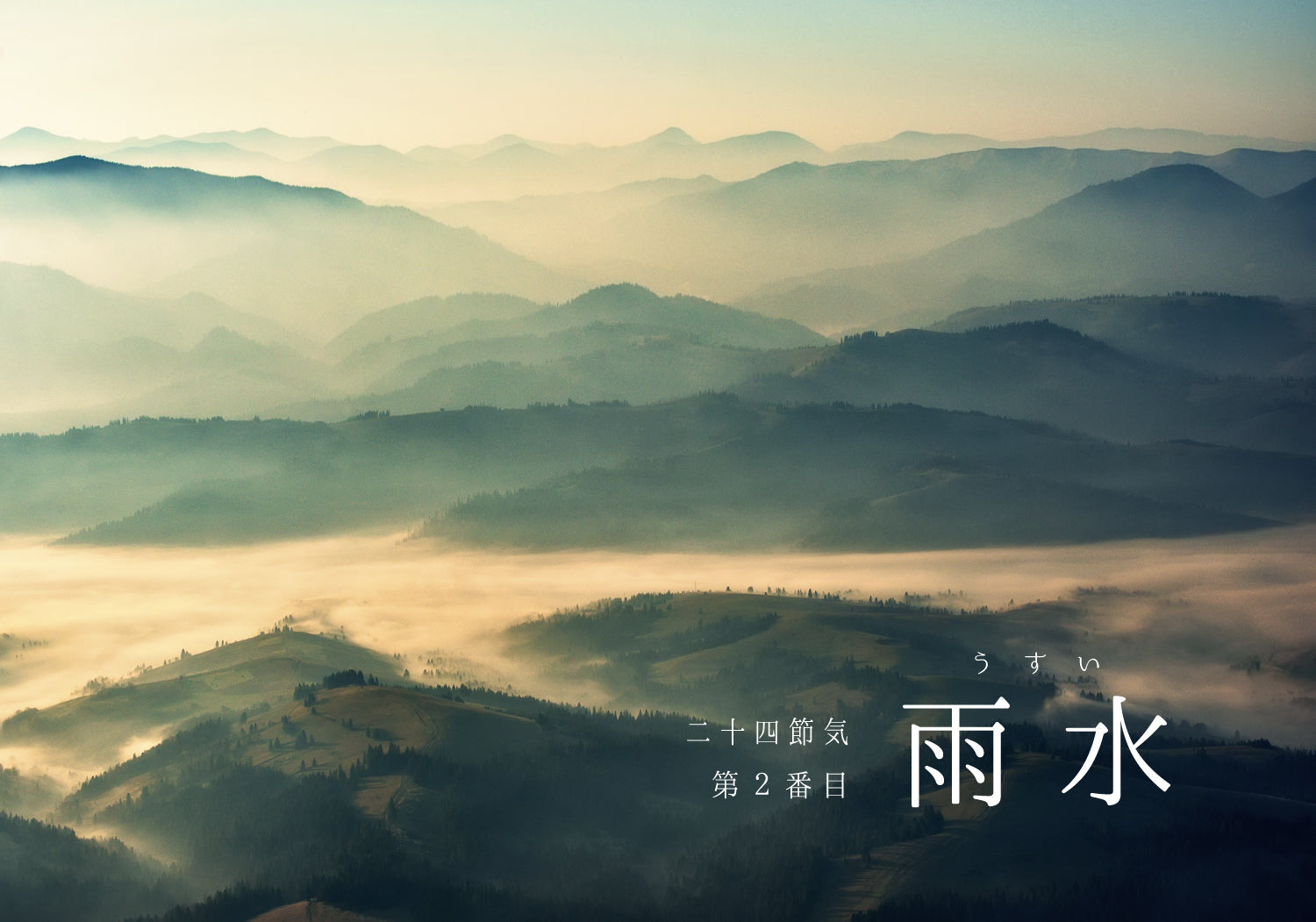In the cold.
It's the coldest time of the year.
Every year, the lowest temperatures are often recorded in various places around this time, and heavy snowfall and cold waves are more likely to have an impact.
It is also the last of the 24 solar terms.
Once the cold weather hits rock bottom, it gradually gets warmer, and when the cold weather ends, it marks the beginning of spring.
According to the calendar, spring has arrived. The long-awaited arrival of spring.
It is said to be the coldest time of the year, but since we are beginning to feel the spring coming around this time of year, some people may feel that it is colder during the Kokan period. However, with a strong cold wave forecast this year, it looks like it will be a while before we can even look forward to spring.
During Daikan, the customs of cold weather (kan) continue from the previous season (Shokan), and
Setsubun is a seasonal turning point that occurs on the last day of Daikan and the day before Risshun.
[Cold]
![]()
[Cold] refers to the 30 days of the 24 solar terms, "Shokan" and "Daikan," which are called "Kan no Uchi" and refer to the coldest time of the year.
We will introduce the customs of the cold season and Great Cold. 
[Winter greetings]
At this time of year, it is customary to send seasonal greeting cards called "winter greetings" to express concern for the cold weather.
A mid-winter greeting card is sent as a seasonal greeting card to show concern for the recipient during the coldest season of the year and to update each other on recent developments.
Other common messages include an apology for not sending New Year's cards during mourning, an apology for not informing the deceased in advance, and a sympathy message for the mourning loved one. These days, people may not have the custom of mailing New Year's cards or letters, and may instead be exchanging messages via email or social media.
The time to send mid-winter greetings is from the end of the New Year period (Kannouchi) to the beginning of spring.
[Winter preparation]
The ninth day after Little Cold is called "Kankyu," and is said to be the day when the water is the clearest in the year. This water is used in a uniquely Japanese food culture that is unique to this time of year.
What is cold brewing?
The term originates from the word "kanzukuri" (cold brewing), which was originally used in the production of sake. "Kanzukuri" refers to the brewing of soy sauce, miso, and sake during the cold season. 
Bean Throwing - Throwing beans at demons to ward off evil spirits

People throw beans to ward off evil spirits while chanting "Oni wa soto, fuku wa uchi" (Demons out, good fortune in).
It was believed that scattering beans, which share the same energy source as rice and are believed to have spiritual powers, would ward off illness and disaster, and that eating the beans would grant them strength.
It is said that demons come late at night (at the hour of the Ox and Tiger), so it is best to throw beans at night. Open the front door, windows, and other doors, and start from the back room and throw beans while shouting "Oni wa soto!" (Demons out!) as if to drive the demons out. Once you've finished throwing beans, immediately lock the door to keep the demons out and prevent your good fortune from escaping.
Did you know that there are five different types of demons with different colors?
The "Five-Colored Demons" come from the Buddhist teaching of "earthly desires," which means "to live peacefully, you must remove the five earthly desires that are blocking your mind."
Red demon: Desire, greed Blue demon: Malice, hatred, anger Green demon: Lack of motivation, laziness, sleepiness, inability to stop unhealthy lifestyle habits Black demon: Doubt, complaints, contradictory thoughts, words and actions Yellow demon (white demon): Fickle mind, delusions, regret, dependence, self-centered conceit
Which demon will you exorcise?
Eating beans
Soybeans are roasted over a fire to ward off evil spirits, and the roasted soybeans are called "lucky beans."
It is said that eating one more bean than your age will pray for good health and happiness for the year, and also rid the body of any evil spirits. It's fine for children, but it can be a bit difficult for adults to eat the same number of lucky beans as their age. In such cases, we recommend Fukucha tea.
To make Fukucha, place the number of lucky beans equal to your age in a teacup and pour in hot tea. You can also enjoy the fragrant aroma by putting them in a teapot with tea leaves. If you roast the lucky beans beforehand, the aroma will be enhanced, resulting in a more fragrant tea. Fukucha is also delicious when you add plums or kelp.
The period around the Great Cold is represented in the 72 seasonal divisions as follows:

In the bitter cold, butterbur flowers start to peek out from the snow-covered ground one by one. It's a joyous time, as it gradually signals the approach of spring.

The water gets colder and colder, and it is the coldest time of the year. At this time, strong cold air from the continent easily enters, bringing record-breaking snowfall and record-low temperatures. 
In modern times, chicken farming has become the norm, but originally, chickens only laid eggs from spring to early summer, making them a valuable commodity. Nowadays, eggs are available in stores all year round, so the sense of seasonality is weak, but eggs are in season from February to April. They are said to be highly nutritious because they mature slowly inside the mother's body during the cold season.
However, this only applies to fertilized eggs; the taste and quality of unfertilized eggs remain the same throughout the year.





